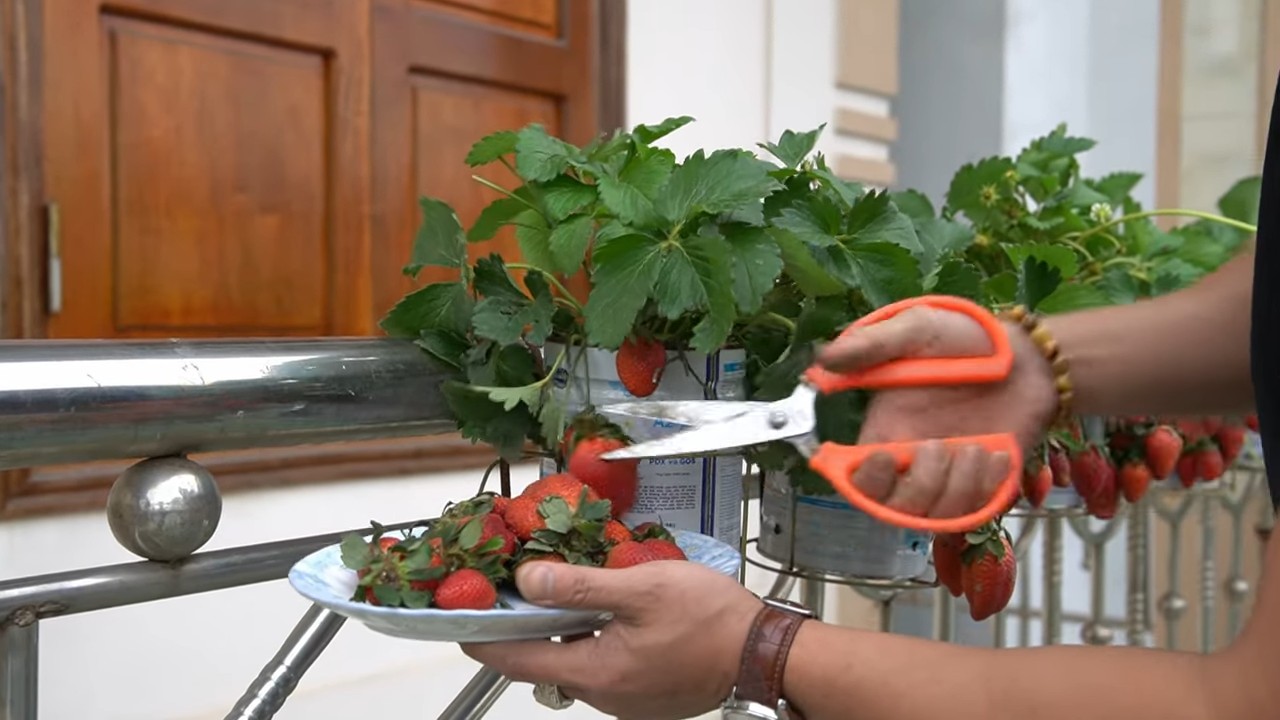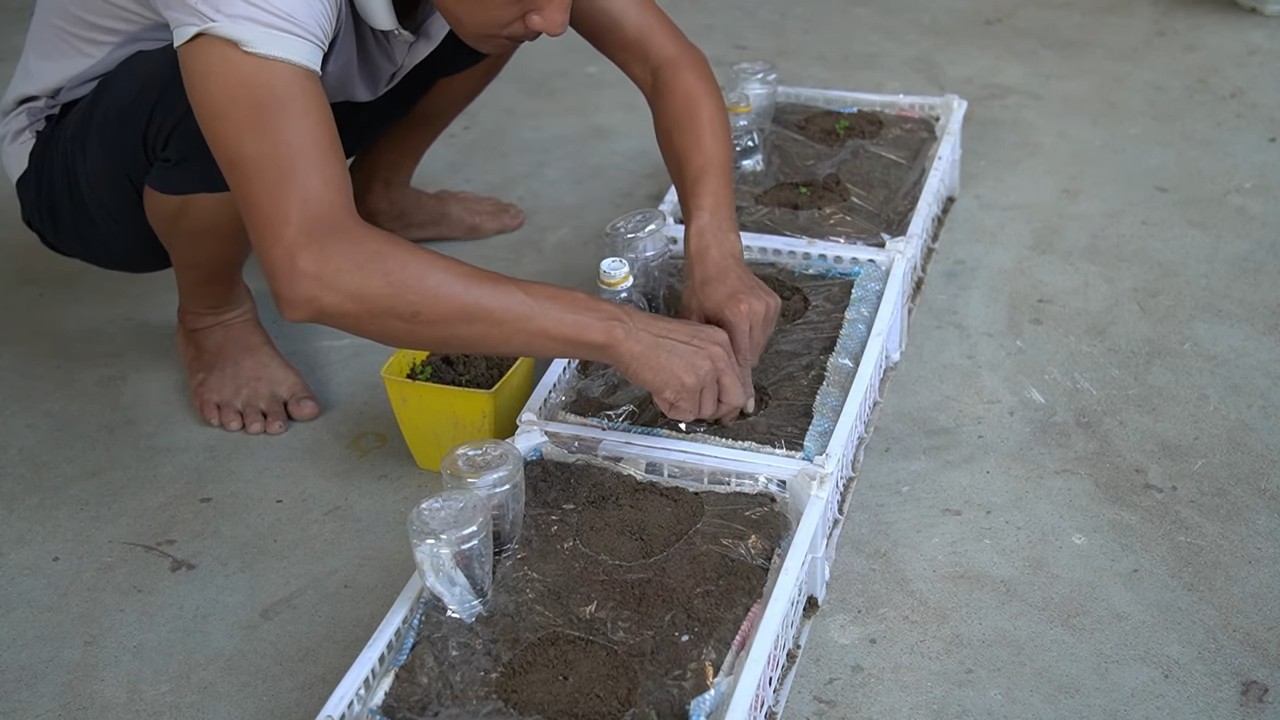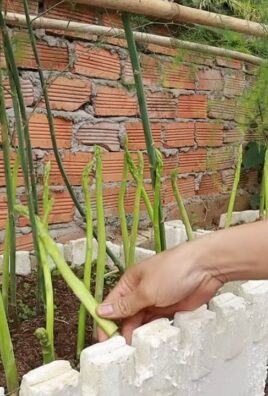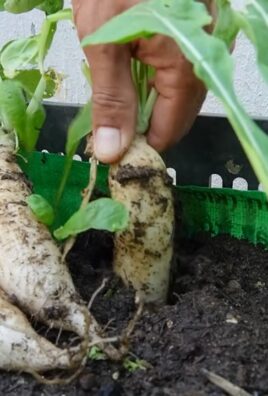Balcony strawberry garden dreams are closer than you think! Imagine stepping onto your balcony and plucking a sun-ripened, juicy strawberry, bursting with flavor – all grown with your own two hands. Sounds idyllic, right? Well, it doesn’t have to be just a dream. This article is your ultimate guide to creating a thriving strawberry patch, even if you only have a small outdoor space.
For centuries, strawberries have been cherished for their delicious taste and health benefits. From ancient Roman gardens to medieval monastery plots, these little red gems have held a special place in our hearts (and stomachs!). But you don’t need acres of land to enjoy the fruits of your labor.
In today’s fast-paced world, connecting with nature can be a real challenge. That’s where the magic of a balcony strawberry garden comes in. It’s a simple, rewarding way to de-stress, learn new skills, and enjoy fresh, organic produce right at your doorstep. Plus, who can resist the charm of a miniature garden overflowing with sweet, red berries? I’m going to show you some easy DIY tricks and hacks that will transform your balcony into a strawberry paradise, regardless of your gardening experience. Let’s get started!

Creating Your Dream Balcony Strawberry Garden
Hey there, fellow plant enthusiasts! I’m so excited to share my experience with creating a thriving strawberry garden right on my balcony. It’s surprisingly easy, incredibly rewarding, and nothing beats the taste of homegrown strawberries. Get ready to transform your outdoor space into a berry-licious paradise!
Choosing the Right Containers and Soil
Before we get our hands dirty, let’s talk about the essentials: containers and soil. These are crucial for a successful strawberry harvest.
* Container Selection: Strawberries don’t need a ton of space, but they do need adequate drainage. I’ve found that these options work best:
* Hanging Baskets: These are fantastic for maximizing space, especially if you have a small balcony. The trailing varieties look stunning cascading down.
* Strawberry Pots: These terracotta pots with pockets are specifically designed for strawberries and allow you to plant multiple plants in a small footprint.
* Window Boxes: Perfect for attaching to your balcony railing, providing easy access and a beautiful display.
* Regular Pots (at least 8 inches in diameter): Any pot that’s at least 8 inches in diameter and has drainage holes will work.
* Soil Matters: Strawberries thrive in well-draining, slightly acidic soil. Avoid using garden soil, as it can become compacted and doesn’t drain well in containers. I highly recommend using a potting mix specifically formulated for fruits and vegetables. You can also create your own mix by combining:
* 60% high-quality potting soil
* 20% compost (for nutrients)
* 20% perlite or vermiculite (for drainage)
Selecting Your Strawberry Varieties
Choosing the right strawberry variety is key to a bountiful harvest. There are three main types:
* June-Bearing: These produce one large crop of strawberries in the spring (usually in June, hence the name). They’re great if you want a big batch for jam-making or freezing.
* Everbearing: These produce two to three crops throughout the growing season (spring, summer, and fall). They’re a good choice if you want a continuous supply of strawberries.
* Day-Neutral: These produce strawberries continuously throughout the growing season, regardless of day length. They’re ideal for balconies as they offer a steady supply of berries.
For balcony gardening, I personally prefer everbearing or day-neutral varieties because they provide a longer harvest period. Some of my favorite varieties include:
* Albion (Day-Neutral): Known for its large, sweet berries and disease resistance.
* Seascape (Day-Neutral): Another excellent day-neutral variety with good flavor and productivity.
* Ozark Beauty (Everbearing): A reliable everbearing variety with delicious, medium-sized berries.
* Tristan (Everbearing): Produces beautiful pink flowers and tasty berries.
Planting Your Strawberry Plants
Now for the fun part – planting!
1. Prepare Your Containers: Fill your chosen containers with the potting mix, leaving about an inch of space at the top.
2. Water the Soil: Thoroughly water the soil until it’s evenly moist but not soggy.
3. Remove Plants from Containers: Gently remove the strawberry plants from their nursery containers. If the roots are tightly bound, gently loosen them with your fingers.
4. Planting Depth: This is crucial! Plant the strawberry plants so that the crown (the point where the roots meet the stem) is level with the soil surface. Planting too deep can cause the crown to rot, while planting too shallow can dry out the roots.
5. Spacing: Space the plants about 8-12 inches apart in the containers. If you’re using a strawberry pot, plant one plant in each pocket.
6. Backfill and Water: Gently backfill the containers with potting mix, firming the soil around the plants. Water thoroughly after planting.
Caring for Your Strawberry Plants
Proper care is essential for a healthy and productive strawberry garden.
* Sunlight: Strawberries need at least 6-8 hours of sunlight per day. Place your containers in the sunniest spot on your balcony.
* Watering: Water regularly, especially during hot, dry weather. The soil should be consistently moist but not waterlogged. Check the soil moisture by sticking your finger about an inch into the soil. If it feels dry, it’s time to water.
* Fertilizing: Feed your strawberry plants every 2-3 weeks with a balanced liquid fertilizer (10-10-10) diluted to half strength. You can also use a fertilizer specifically formulated for strawberries.
* Mulching: Apply a layer of straw or pine needles around the plants to help retain moisture, suppress weeds, and keep the berries clean.
* Pest Control: Keep an eye out for common strawberry pests like aphids, slugs, and spider mites. You can control these pests with insecticidal soap, neem oil, or by handpicking them off the plants.
* Bird Protection: Birds love strawberries just as much as we do! Protect your berries with netting or bird repellent.
* Removing Runners: June-bearing strawberries produce runners (long stems that grow horizontally and develop new plantlets). Remove these runners to encourage the plant to focus its energy on producing fruit. Everbearing and day-neutral varieties also produce runners, but you don’t need to remove them as frequently.
* Winter Care: In colder climates, protect your strawberry plants from freezing temperatures by moving them to a sheltered location or covering them with a layer of straw or burlap.
Harvesting Your Strawberries
The moment you’ve been waiting for – harvesting your delicious strawberries!
* Ripeness: Strawberries are ready to harvest when they are fully red, plump, and slightly soft to the touch.
* Harvesting Technique: Gently twist or snip the stem just above the berry. Avoid pulling the berry off, as this can damage the plant.
* Timing: Harvest strawberries in the morning, after the dew has dried.
* Storage: Store freshly harvested strawberries in the refrigerator for up to a week.
Troubleshooting Common Problems
Even with the best care, you might encounter some problems along the way. Here are a few common issues and how to address them:
* Yellowing Leaves: This could be a sign of overwatering, underwatering, or nutrient deficiency. Adjust your watering schedule and fertilize your plants if needed.
* Small Berries: This could be due to insufficient sunlight, poor soil, or overcrowding. Make sure your plants are getting enough sunlight, fertilize them regularly, and thin out the plants if necessary.
* Rotting Berries: This could be caused by fungal diseases or pests. Remove any affected berries and treat the plants with a fungicide or insecticide. Ensure good air circulation around the plants to prevent fungal diseases.
* No Berries: This could be due to a lack of pollination. Strawberries are self-pollinating, but you can help them along by gently shaking the plants or using a small paintbrush to transfer pollen from one flower to another.
Extending Your Strawberry Season
Want to enjoy strawberries for even longer? Here are a few tips:
* Succession Planting: Plant new strawberry plants every few weeks to ensure a continuous harvest.
* Cold Frames: Use a cold frame to protect your plants from frost and extend the growing season in the spring and fall.
* Indoor Growing: Bring your strawberry plants indoors during the winter and grow them under grow lights.
Enjoying Your Harvest
Now that you’ve harvested your delicious strawberries, it’s time to enjoy them! Here are a few ideas:
* Eat them fresh: Nothing beats the taste of a freshly picked strawberry.
* Make jam or preserves: Preserve your harvest for later enjoyment.
* Bake them into pies, cakes, or muffins: Add a touch of sweetness to your favorite baked goods.
* Freeze them: Freeze strawberries for smoothies, desserts, or sauces.
* Share them with friends and family: Spread the joy of homegrown strawberries!
I hope this guide has inspired you to create your own balcony strawberry garden. It’s a rewarding and delicious experience that you won’t regret. Happy gardening!

Conclusion
Transforming your balcony into a thriving strawberry garden is more than just a fun project; it’s a gateway to enjoying fresh, flavorful berries right outside your door. This DIY approach, detailed above, offers a cost-effective and incredibly rewarding way to cultivate your own delicious strawberries, regardless of your gardening experience or the size of your outdoor space.
Why is this DIY balcony strawberry garden a must-try? Because it puts you in control. You choose the varieties you love, nurture them with care, and harvest the sweetest rewards. Forget the bland, often overpriced strawberries from the grocery store. Imagine plucking sun-ripened berries, bursting with flavor, to enjoy in your morning yogurt, as a topping for your favorite dessert, or simply as a healthy and satisfying snack.
Beyond the taste, creating a balcony strawberry garden is a fantastic way to connect with nature, even in an urban environment. The simple act of tending to your plants, watching them grow, and anticipating the harvest can be incredibly therapeutic and fulfilling. It’s a chance to slow down, appreciate the beauty of the natural world, and enjoy the fruits (literally!) of your labor.
Looking for variations? Consider experimenting with different container types. Hanging baskets are perfect for maximizing vertical space and creating a visually stunning display. Stackable planters are another great option for small balconies, allowing you to grow a large number of plants in a compact area. You can also explore different strawberry varieties, from everbearing types that produce fruit throughout the season to June-bearing varieties that offer a concentrated harvest. Don’t be afraid to mix and match to find the perfect combination for your taste and growing conditions.
Another exciting variation is companion planting. Basil, thyme, and marigolds are all excellent companions for strawberries, helping to deter pests and improve the overall health of your plants. Adding these herbs and flowers to your balcony strawberry garden can create a more diverse and vibrant ecosystem.
Furthermore, think about the aesthetic appeal of your garden. Use colorful pots, add decorative elements, and create a space that reflects your personal style. Your balcony strawberry garden can be more than just a source of food; it can be a beautiful and inviting oasis.
We strongly encourage you to give this DIY balcony strawberry garden a try. It’s a simple, affordable, and incredibly rewarding project that will bring joy and deliciousness to your life. And most importantly, we want to hear about your experience! Share your photos, tips, and stories in the comments below. Let’s create a community of balcony strawberry gardeners and inspire others to grow their own food. What varieties did you choose? What challenges did you face? What successes did you celebrate? Your insights will be invaluable to other aspiring gardeners.
Don’t wait any longer. Start planning your balcony strawberry garden today and get ready to enjoy the taste of homegrown goodness!
Frequently Asked Questions (FAQ)
What is the best time of year to start a balcony strawberry garden?
The best time to start your balcony strawberry garden depends on your climate. In general, early spring or fall are ideal. In warmer climates, you can plant strawberries in the fall for a winter harvest. In colder climates, start your plants indoors in late winter or early spring and transplant them outdoors after the last frost. Starting in the spring allows the plants to establish themselves before the heat of summer. Fall planting gives the plants a chance to develop strong root systems before winter dormancy, leading to a more robust harvest the following spring.
What kind of soil should I use for my balcony strawberry garden?
Strawberries thrive in well-draining, slightly acidic soil. A good potting mix specifically formulated for fruits and vegetables is an excellent choice. Avoid using garden soil, as it can be too heavy and may not drain properly in containers. You can also amend your potting mix with compost or other organic matter to improve its fertility and drainage. Aim for a pH level between 5.5 and 6.5 for optimal strawberry growth.
How much sunlight do strawberries need?
Strawberries need at least 6-8 hours of direct sunlight per day to produce a good crop of berries. Choose a location on your balcony that receives plenty of sunlight throughout the day. If your balcony is shaded for part of the day, try to position your plants so that they receive morning sun, which is less intense than afternoon sun. If you don’t have enough natural sunlight, you can supplement with grow lights.
How often should I water my strawberry plants?
Water your strawberry plants regularly, especially during hot, dry weather. The soil should be kept consistently moist, but not waterlogged. Check the soil moisture by sticking your finger into the soil. If the top inch feels dry, it’s time to water. Avoid overwatering, as this can lead to root rot. Container-grown plants tend to dry out more quickly than plants grown in the ground, so you may need to water them more frequently.
What kind of fertilizer should I use for my strawberry plants?
Feed your strawberry plants with a balanced fertilizer specifically formulated for fruits and vegetables. Look for a fertilizer with an NPK ratio (nitrogen, phosphorus, potassium) of around 10-10-10 or 12-12-12. Fertilize your plants every 2-4 weeks during the growing season. You can also use organic fertilizers, such as compost tea or fish emulsion. Avoid over-fertilizing, as this can lead to excessive foliage growth and fewer berries.
How do I protect my strawberries from pests and diseases?
Monitor your strawberry plants regularly for signs of pests and diseases. Common pests include aphids, spider mites, and slugs. You can control these pests with insecticidal soap, neem oil, or by handpicking them off the plants. Common diseases include powdery mildew and gray mold. Prevent these diseases by providing good air circulation, avoiding overhead watering, and removing any infected leaves. You can also use fungicides if necessary.
How do I harvest my strawberries?
Strawberries are ready to harvest when they are fully red and slightly soft to the touch. Gently twist the berry off the plant, leaving the green cap and a small piece of stem attached. Harvest your strawberries in the morning, when they are at their peak flavor. Store your harvested strawberries in the refrigerator for up to a week.
What do I do with my strawberry plants in the winter?
In colder climates, you will need to protect your strawberry plants from frost and freezing temperatures. You can do this by moving your containers to a sheltered location, such as a garage or shed. You can also cover your plants with a layer of mulch or straw to insulate them from the cold. In milder climates, you may not need to provide any winter protection.
Can I grow strawberries from seed?
While it’s possible to grow strawberries from seed, it’s a more challenging process than starting with established plants. Strawberry seeds require a period of cold stratification (exposure to cold temperatures) before they will germinate. It can also take several months for strawberry plants grown from seed to produce fruit. For beginners, it’s generally recommended to start with strawberry plants or runners.
What are runners and how do I use them?
Runners are horizontal stems that strawberry plants produce. These runners will develop roots and form new plants. You can propagate new strawberry plants by rooting these runners. Simply place the runner in a small pot filled with potting mix and keep the soil moist. Once the runner has developed roots, you can cut it from the mother plant and transplant it to a larger container. This is a great way to expand your balcony strawberry garden without having to purchase new plants.




Leave a Comment